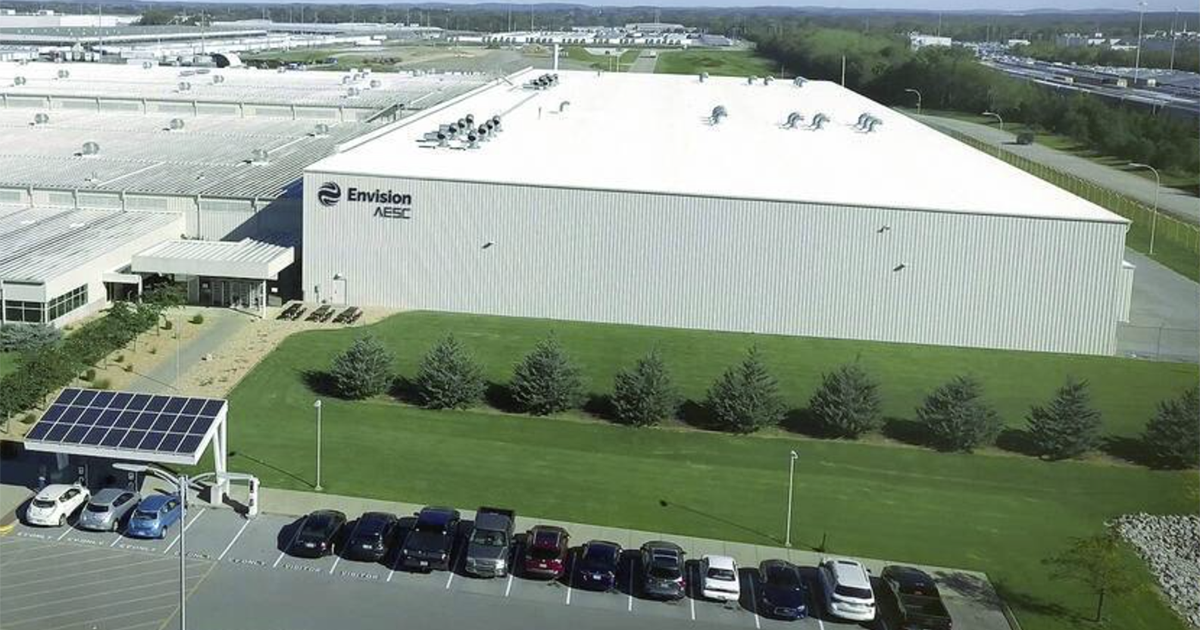
Japan-based Envision AESC will plow $810 million into a new South Carolina battery factory to supply BMW Group’s next-generation electric vehicles.
The planned 1.5-million-square-foot factory in Florence, S.C., will initially create 1,170 jobs and have an annual capacity of up to 30 gigawatt hours, the company said Tuesday. That volume can supply enough batteries for 300,000 EVs annually, according to AutoForecast Solutions.
The new plant will produce BMW’s new energy-dense Gen 6 lithium ion cell.
The South Carolina investment is “another milestone on our journey to building an electrification network in the U.S.,” Envision AESC Group CEO Shoichi Matsumoto said in a statement.
The investment is the latest in an ever-expanding constellation of battery factories in the southeast United States but also a critical weapon in BMW’s U.S. manufacturing expansion.
The German automaker is undertaking a $1 billion retrofit of its Spartanburg plant, the largest BMW assembly plant in the world. It also will build a $700 million battery-pack assembly plant in nearby Woodruff, S.C.
By 2030, BMW intends to produce at least six electric models in Spartanburg, 190 miles northwest of the new AESC battery venture.
Spartanburg will increase its total square footage by about a third, and annual production capacity will rise from about 180,000 vehicles currently to 290,000 following the investment. Retooling will begin in 2024 and the first new vehicles will start production in 2025.
BMW’s investments position its vehicles to qualify for some of the $7,500 federal EV tax credit under the recently signed Inflation Reduction Act, which incentivizes U.S. manufacturing of electric vehicles and batteries.
Envision AESC joins a cluster of suppliers now constructing battery cell factories in the U.S., including Samsung, LG Chem and SK Innovation.
The South Carolina plant marks Envision’s second such announcement this year. In April, the supplier said it will build a $2 billion factory in Bowling Green, Ky., to supply a new generation of battery components for Mercedes-Benz. That plant will employ 2,000 workers and supply battery components for 300,000 vehicles a year by 2027.
It will supply Mercedes-Benz’s newly launched EV production line in Vance, Ala., 300 miles away. But it will also pitch future business to other U.S. automakers, Matsumoto told Automotive News at the time.
“We will produce batteries for numerous electric vehicle manufacturers,” Matsumoto said. “We have growth plans for both the U.S. and other regions around the world.”
It’s unclear if Envision AESC’s South Carolina plant will follow the same blueprint. The supplier is focusing on BMW for its South Carolina plant and no additional phases are planned, an Envision AESC spokeswoman said in an e-mail Tuesday.
The company also supplies batteries for Nissan’s U.S.-made Leaf hatchback from a plant in Smyrna, Tenn. That factory was initially built and owned by Nissan, with plans to supply as many as 150,000 vehicles a year. But Nissan’s early plans for EV adoption did not materialize.
Envision AESC said its three U.S. plants will have a combined capacity of more than 70 gigawatt hours.
BMW’s Gen 6 battery cell promises to go farther on a single charge and recharge faster. According to the automaker, the cylindrical cell delivers up to 30 percent greater driving range than the current generation. Recharging to 80 percent from 10 percent is 30 percent quicker.
While current BMW batteries feature prismatic cells configured in modules bolted together to form a pack, the next-gen design ditches the modules. The new cell-to-pack design allows more power-packing cells to be squeezed into the same battery footprint.
“Energy density is much higher than before,” said Simon Erhard, who helps lead Gen 6 development at BMW Group. “You can put more cells into the battery pack.”
Maximizing energy density also reduces battery weight and cost.
BMW said the new battery pack is 50 percent less expensive. That will be essential to achieving price parity with combustion engine vehicles, as the battery pack accounts for about 40 percent of an electric vehicle’s cost.
BMW said the cathode in its battery cell uses 50 percent less cobalt, while the anode has 20 percent less graphite. The cells will be produced with renewable energy and partly use recycled cobalt, nickel and lithium, cutting production-related carbon emissions by 60 percent.